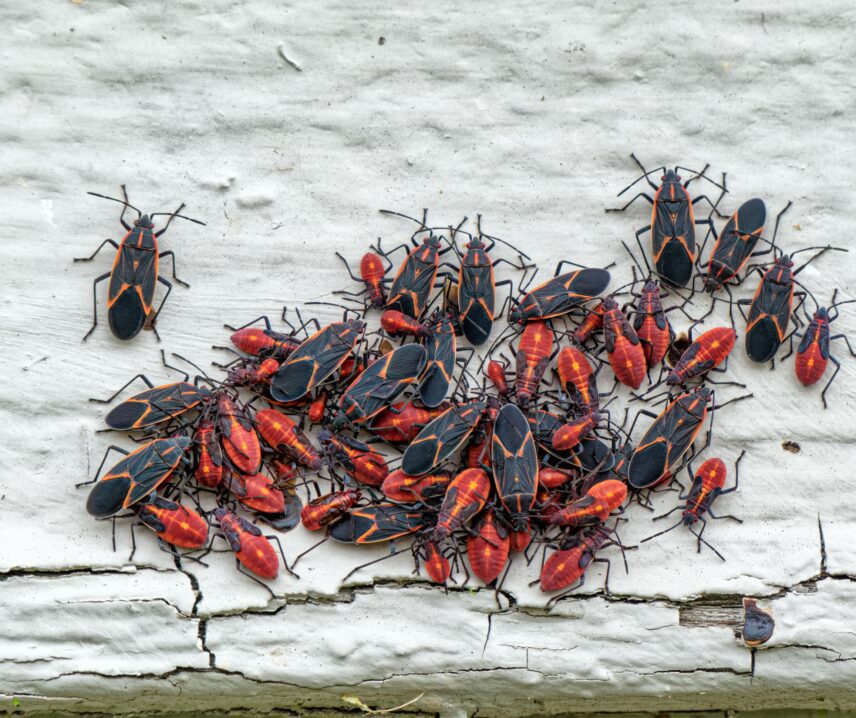In the realm of insects, few creatures capture attention quite like box elder bugs. With their striking black bodies adorned with vibrant red markings, these insects stand out against the backdrop of nature. However, when box elder bugs invade homes and gardens in large numbers, they quickly become unwelcome guests. In this blog post, we will delve into the fascinating world of box elder bugs, exploring their appearance, behavior, and the best ways to manage their presence.
Box Elder Bug Basics
Box elder bugs, scientifically known as Boisea trivittata and belonging to the family Rhopalidae, are native to North America, particularly the western regions. These small insects measure about half an inch in length and display a unique coloration pattern. Their bodies are predominantly black, with vibrant red markings along the edges of the wings and the thorax.
Life Cycle and Behavior
Box elder bugs undergo a simple metamorphosis, consisting of three stages: egg, nymph, and adult. In early spring, adult box elder bugs emerge from their overwintering sites, often seeking out box elder, maple, or ash trees. After mating, females lay clusters of red and black eggs on the bark of these trees, which incubate for about two weeks. Once the eggs hatch, nymphs emerge and undergo several molting stages before maturing into adult box elder bugs.
Diet and Habitat
Box elder bugs primarily feed on the sap of box elder trees (Acer negundo), from which they derive their name. However, they can also be found on other trees, such as maple, ash, and fruit trees. While they do pierce the bark to feed on sap, box elder bugs are not known to cause significant damage to the trees. They are primarily considered a nuisance due to their tendency to congregate in large numbers. During the summer, box elder bugs may also feed on certain herbaceous plants, seeds, and other insects.
Managing Box Elder Bugs
When it comes to managing box elder bugs, prevention is key. Here are some practical steps to minimize their presence:
- Seal entry points: Conduct a thorough inspection of your home, identifying and sealing cracks, gaps, and other openings to prevent bug entry.
- Remove host trees: If feasible, consider removing box elder, maple, or ash trees in close proximity to your home, as these are attractive to box elder bugs.
- Vacuum or sweep: If you notice box elder bugs indoors, use a vacuum or broom to safely collect and dispose of them outside.
While these measures can help control box elder bug populations, severe infestations may require professional intervention. Pest control professionals have the knowledge, experience, and resources to effectively manage box elder bug problems. If you’re facing a persistent or extensive infestation, it’s advisable to seek their assistance for targeted treatments and long-term solutions.
Box elder bugs are captivating insects with their distinctive coloration and behavior. Understanding their life cycle, habits, and implementing prevention strategies can help minimize their presence and preserve the harmony of your home and garden. Remember, for more challenging infestations, don’t hesitate to reach out to professional pest control experts who can provide tailored solutions to manage box elder bugs effectively.


